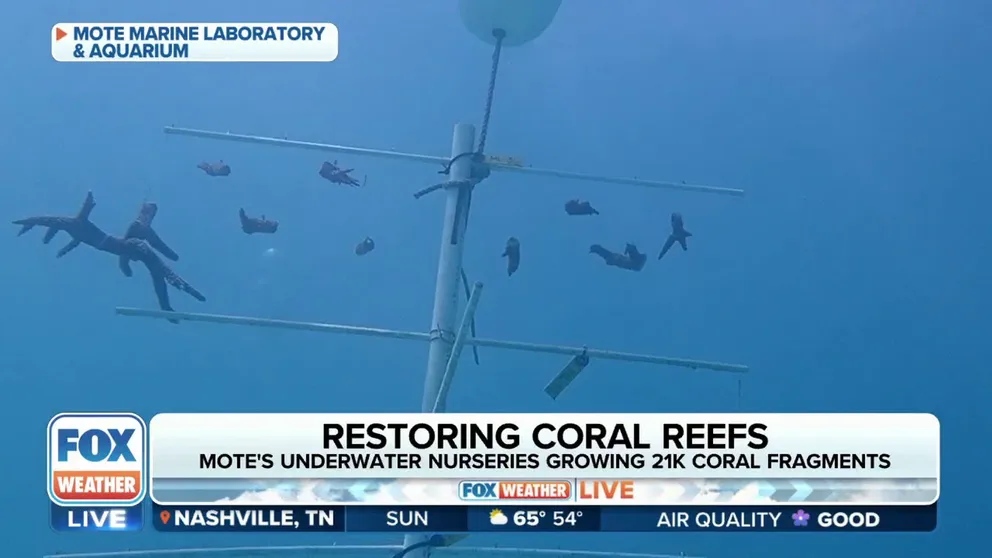New species of dragonfish discovered in Antarctic
The dragonfish was discovered by researchers trawling for zooplankton in the western Antarctic Peninsula.
How researchers work to restore declining coral reefs as oceans warm
Dr. Jason Spadaro, Program Manager of Mote Coral Reef Restoration and Research Program, joined FOX Weather on Sunday and explained how researchers are not only trying to preserve what’s left of our coral reefs, they’re trying to restore function to those critical ecosystems that support marine life.
Researchers in the Antarctic Peninsula have discovered a new species of Antarctic dragonfish, a new journal study shows.
The dragonfish, called the Banded Dragonfish or Akarotaxis gouldae, was discovered by researchers from the William & Mary’s Virginia Institute of Marine Science. The fish was named in honor of a recently retired Antarctic research and supply vessel called the Laurence M. Gould and its crew, for the vessel’s scientific contributions.

Coverage image of the Akarotaxis gouldae and the Lawrence M. Gould research and supply vessel
(Image provided by Andrew Corso / FOX Weather)
The new species of dragonfish has a few distinct characteristics, recognized by two dark vertical bands of color on the fish’s body, the journal Zootaxa said. The Banded Dragonfish also has a slender body with a wide snout and elongated mouth and large oval-shaped eyes, according to Zootaxa.
POPULAR FLORIDA FISH NOW HAS A NEW NAME
Discovery of the species
Larvae of the fish were collected off the coast of Antarctica while researchers were trawling for zooplankton, the journal said. Originally thought to be a different species of dragonfish closely related to Akarotaxis gouldae, the fish were identified through DNA and genetic analysis, according to Zootaxa.
When inspecting adult Akarotaxis gouldae and comparing it to the closely related dragonfish Akarotaxis nudiceps, lead researcher Andrew Corso and his colleagues found something surprising.
"There are two distinct bands on the sides of adult Akarotaxis gouldae that are not present on Akarotaxis nudiceps, so we were surprised that the species already existed in collections but had been previously overlooked," Corso said.
Learning more about the Banded Dragonfish and its origins
Through a process called phylogeny, which Corso said uses the rate of genetic mutation as a guide to find a species’ evolutionary history, genetic testing revealed that the Banded Dragonfish had deviated from a separate species approximately 780,000 years ago, Corso and his coauthor Thomas Desvignes, a researcher from the Institute of Neuroscience at the University of Oregon, found.
The future of Akarotaxis gouldae research
Because Antarctic dragonfish live in remote parts of the Southern Ocean, they are poorly understood today, the journal said. The fish live in deep waters as adults, research shows. Analysis of the larvae of the Akarotaxis gouldae suggests that the distribution of the fish was limited to the water around the western Antarctic Peninsula, according to Zootaxa.
"We hypothesize that a population of dragonfish may have become isolated within deep trenches under glaciers, surviving on food pushed in by the moving ice. Once the glaciers retreated, this subpopulation had become distinct enough to be reproductively incompatible with Akarotaxis nudiceps," Corso said.
Corso said the populations of the Akarotaxis gouldae appear to have a small range compared to other fish endemics in the Southern Ocean. "This limited range combined with their low reproductive capacity and the presence of early life stages in shallower waters suggest that this is a vulnerable species that could be impacted by the krill fishery," Corso said.





